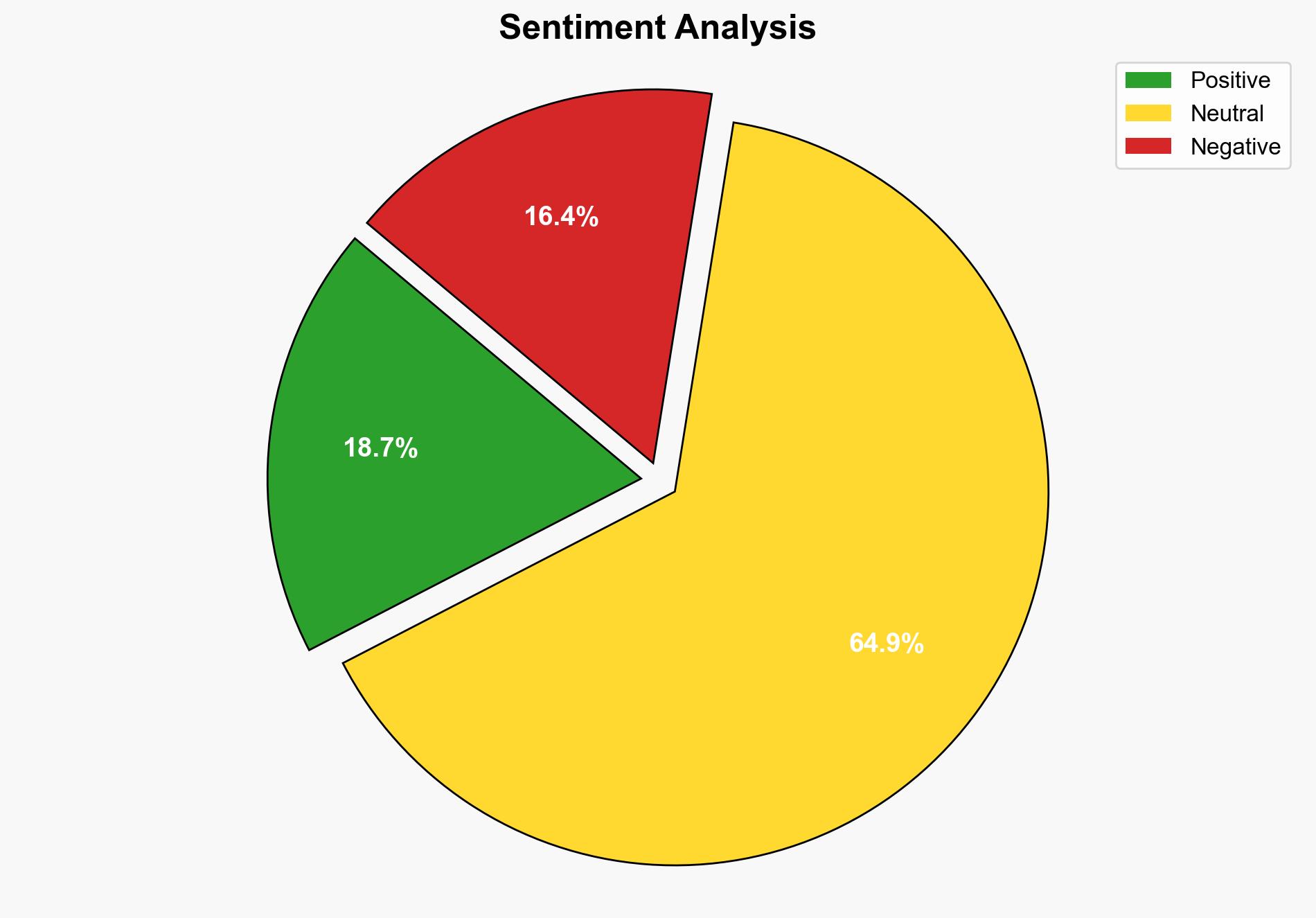Campaigning begins in Myanmar’s junta-run election – CNA
Published on: 2025-10-28
Intelligence Report: Campaigning begins in Myanmar’s junta-run election – CNA
1. BLUF (Bottom Line Up Front)
The most supported hypothesis is that the Myanmar junta’s election is a strategic maneuver to legitimize its rule amidst ongoing civil conflict and international scrutiny. Confidence in this assessment is moderate due to the opaque nature of the junta’s internal decision-making processes and the complex socio-political landscape. It is recommended to monitor the election’s impact on regional stability and international relations, particularly with ASEAN and Western nations.
2. Competing Hypotheses
1. **Hypothesis A**: The election is primarily a facade to legitimize the junta’s control and suppress opposition, with no genuine intention of democratic reform.
– **Supporting Evidence**: The election is boycotted by major opposition groups and criticized by international bodies for restrictive conditions. The junta has dissolved popular opposition parties and jailed key figures.
– **Contradictory Evidence**: The junta’s public narrative of reconciliation and reform, although largely unsubstantiated, suggests an alternative motive.
2. **Hypothesis B**: The election is a genuine attempt by the junta to transition towards a controlled form of democracy to stabilize the country and gain international acceptance.
– **Supporting Evidence**: The junta’s organization of the election and engagement with some political entities could indicate a strategic shift towards limited political pluralism.
– **Contradictory Evidence**: The ongoing civil war, human rights abuses, and martial law in conflict zones undermine the credibility of this hypothesis.
3. Key Assumptions and Red Flags
– **Assumptions**:
– The junta believes international legitimacy is crucial for its long-term survival.
– Opposition groups’ boycott will not significantly impact the election’s perceived legitimacy.
– **Red Flags**:
– Lack of transparency in voter registration and election monitoring.
– Reports of human rights violations and suppression of dissent.
– **Blind Spots**:
– Internal dynamics within the junta that may influence election outcomes.
– Potential shifts in public sentiment that are not captured by current intelligence.
4. Implications and Strategic Risks
– **Geopolitical Risks**: The election could exacerbate tensions with Western nations, leading to increased sanctions and diplomatic isolation.
– **Regional Stability**: ASEAN’s response will be critical; failure to address the situation could lead to regional instability.
– **Economic Impact**: Continued unrest may deter foreign investment and exacerbate humanitarian crises.
– **Cyber and Information Warfare**: Potential for increased cyber activity as the junta seeks to control information and suppress dissent.
5. Recommendations and Outlook
- Engage with ASEAN to encourage a unified regional response that promotes dialogue and conflict resolution.
- Enhance monitoring of cyber activities to prevent misinformation and protect communication channels.
- Scenario Projections:
– **Best Case**: The election leads to dialogue and gradual political reform.
– **Worst Case**: Escalation of conflict and further international isolation.
– **Most Likely**: Continued status quo with limited international engagement and persistent internal conflict.
6. Key Individuals and Entities
– Aung San Suu Kyi: Jailed democratic leader, symbol of opposition.
– National League for Democracy: Dissolved opposition party.
– Union Solidarity and Development Party: Junta-aligned political entity.
7. Thematic Tags
national security threats, regional focus, political legitimacy, human rights, ASEAN relations




